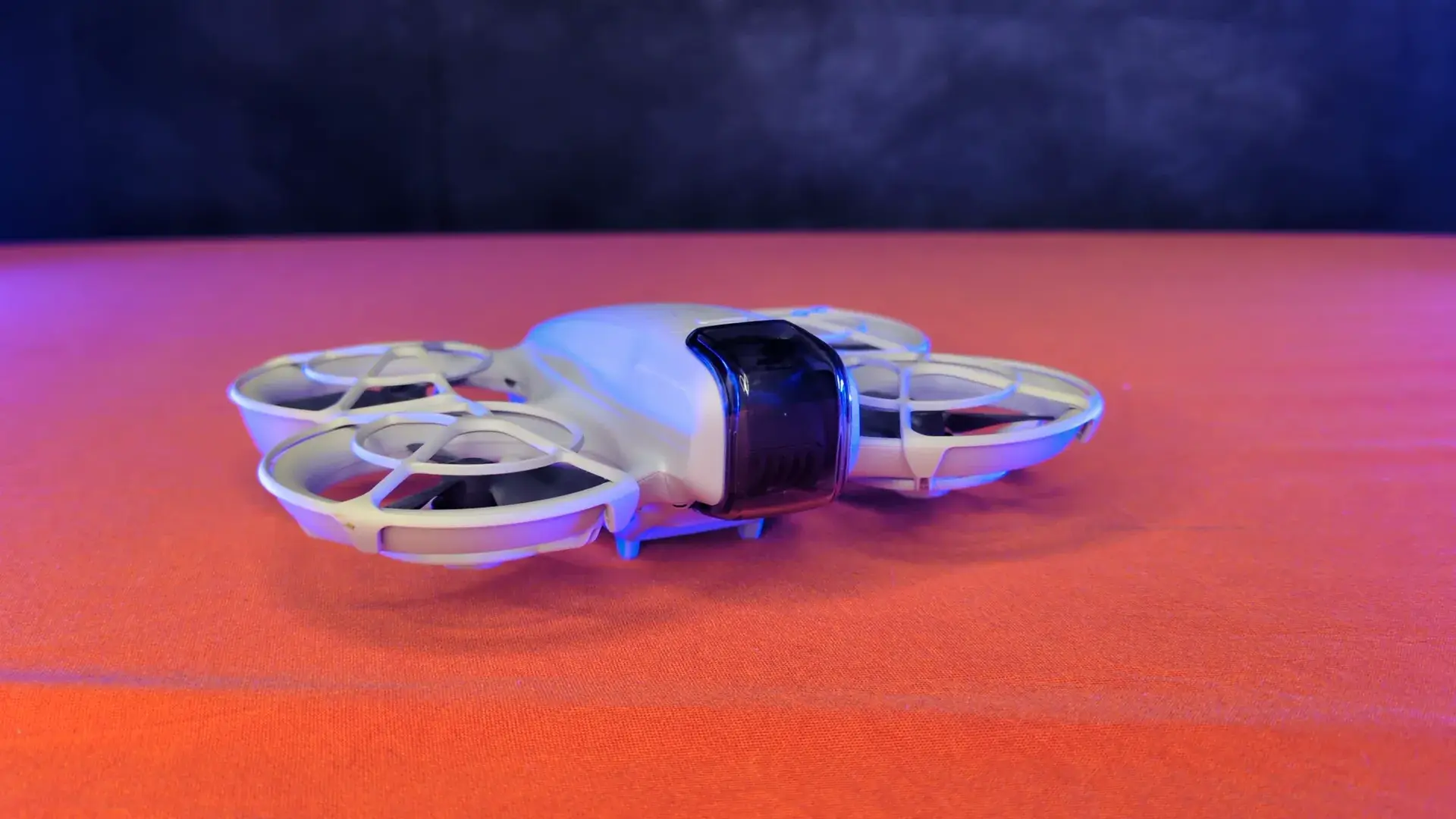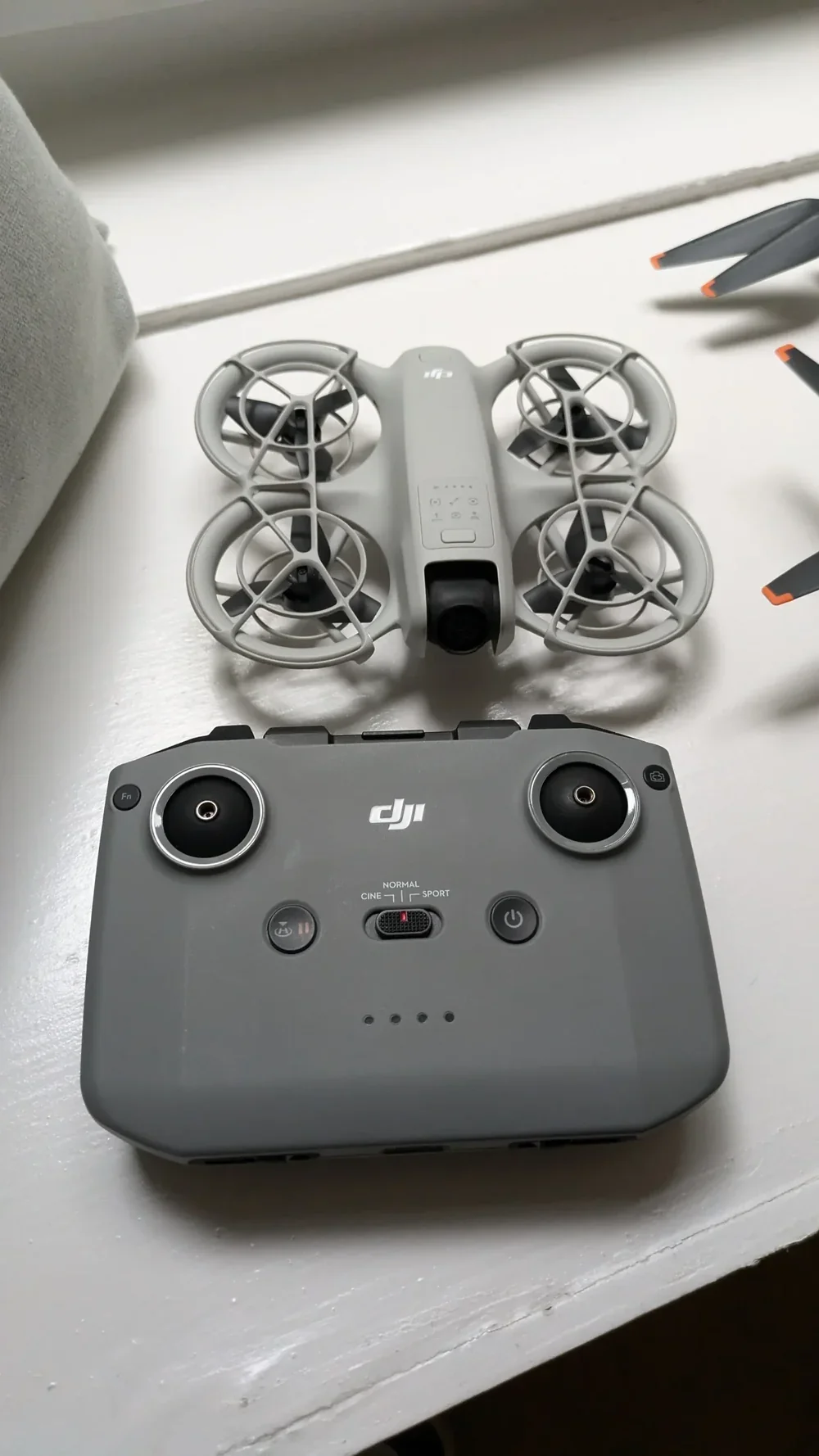
Understanding your DJI Neo's speed capabilities is key to capturing the perfect shot, whether you need to track a fast-moving subject or execute a slow, cinematic pan.
Many pilots are unsure how to access the drone's different speed settings or what each mode is best for. This can lead to jerky footage or missed opportunities.
This guide will clarify the purpose of each flight mode and provide step-by-step instructions on how to use them to control your drone's speed effectively.

30 Second Summary
- To achieve the DJI Neo's maximum horizontal speed of 16 m/s, you must fly the drone in Manual mode.
- For a fast but more stable flight experience, activate Sport mode to reach a top horizontal speed of 8 m/s.
- When flying for general purposes, use Normal mode for a balanced and controlled horizontal speed of 6 m/s.
- To ascend at the fastest rate, engage Sport mode, which allows for a maximum ascent speed of 3 m/s.
- For capturing smooth, cinematic video footage, switch to Cine mode to limit the drone's maximum ascent and descent speed to 0.5 m/s.
Fly in Manual mode to achieve the maximum 16 m/s speed
To unleash the DJI Neo's full speed potential of 16 m/s (approximately 35.8 mph), you need to operate it in Manual (M) mode. This mode gives you complete control over the drone's movement without the automatic stabilisation and braking found in other modes, making it suitable for experienced pilots, especially those flying with FPV goggles.
To activate it, you will need a compatible controller like the DJI FPV Remote Controller 3. In the DJI Fly app settings, navigate to the "Control" tab and enable M mode. Before your first M mode flight, it is highly recommended to practice in DJI's flight simulator to get used to the sensitive controls. Always fly in a large, open area, clear of obstacles, as the drone will not automatically stop or avoid collisions in this mode.
Activate Sport mode for a fast, stable flight at 8 m/s
For a combination of high speed and stability, Sport (S) mode is the ideal choice, offering a top horizontal speed of 8 m/s (around 17.9 mph). This mode increases the drone's responsiveness and agility, making it perfect for tracking moderately fast subjects or simply enjoying a more dynamic flying experience.
To engage Sport mode, use the flight mode switch on your remote controller, moving it to the "S" position. Be aware that in Sport mode, the drone's obstacle avoidance sensors are disabled, so you must maintain a clear line of sight and be vigilant of your surroundings. The drone will also ascend and descend faster, at 3 m/s and 2 m/s respectively, and will brake more aggressively than in Normal mode.

Use Normal mode for a balanced horizontal speed of 6 m/s
Normal (N) mode is the default flight setting for the DJI Neo and provides a balanced flight experience with a maximum horizontal speed of 6 m/s (approximately 13.4 mph).
This mode is ideal for everyday flying and capturing standard video shots. In Normal mode, the drone utilizes its full suite of sensors, including GPS and downward vision positioning, to hover stably and provide a smooth, predictable response to your control inputs. Obstacle avoidance is fully active, making it the safest mode for general use.
To fly in Normal mode, simply ensure the flight mode switch on your controller is set to the "N" position. The ascent and descent speeds are capped at a manageable 2 m/s.
Engage Sport mode for the fastest ascent speed of 3 m/s
When you need your drone to gain altitude quickly, Sport (S) mode provides the fastest ascent speed at 3 m/s. This is particularly useful for specific shots like a "rocket" QuickShot, where the drone flies straight up to reveal the landscape, or for quickly getting above obstacles.
To perform a fast ascent, switch the controller to Sport mode and push the left control stick (in Mode 2) straight up. Remember that the faster ascent consumes more battery power, so monitor your battery level, especially if you are ascending to a high altitude.
The maximum descent speed in Sport mode is 2 m/s.

Switch to Cine mode for a smooth 0.5 m/s ascent and descent
For capturing professional, smooth, and cinematic footage, Cine (C) mode is your best tool. This mode significantly dampens the drone's movements and limits its speed, capping both ascent and descent at a slow and steady 0.5 m/s. The reduced speed and smoothed-out braking ensure your video is free from any sudden jerks or abrupt movements, making it perfect for slow pans, reveals, and orbital shots. To use it, move the flight mode switch on your controller to the "C" position. The drone's horizontal speed is also reduced in this mode, giving you the finest control for precise framing.
Conclusion
Mastering the DJI Neo's different flight modes and speed settings is essential for any pilot looking to elevate their aerial videography and flying skills. From the high-speed thrills of Manual and Sport modes to the deliberate, smooth control of Cine mode, each setting serves a distinct purpose. By understanding how to activate each mode and learning the scenarios they are best suited for, you can move beyond basic flying and start executing complex, creative shots with confidence. Always remember to consider your environment and prioritize safety, especially when flying at high speeds or with obstacle avoidance disabled.
Frequently Asked Questions
How does flight speed affect battery life?
Flying at higher speeds, especially in Sport or Manual mode, forces the motors to work harder and consumes significantly more battery power. This will reduce your overall flight time compared to flying at a slower, more consistent speed in Normal or Cine mode. The official 18-minute maximum flight time is measured at a constant speed, not during aggressive high-speed manoeuvres.
What is the maximum wind speed the DJI Neo can resist?
The DJI Neo has a maximum wind speed resistance of 8 m/s, which is equivalent to a Level 4 wind on the Beaufort scale. While it can maintain its position in winds up to this speed, flying in strong winds will reduce flight stability and significantly drain the battery as the motors work to counteract the wind.
Can I adjust the speed settings within each flight mode?
Yes, within the DJI Fly app, you can go into the advanced settings for each flight mode (Cine, Normal, and Sport) to fine-tune the maximum speed, ascent/descent rates, and control stick sensitivity. This allows you to create a custom flight profile that perfectly matches your piloting style or the specific requirements of a shot.
How fast can the drone fly when tracking a subject with ActiveTrack?
While specific speed figures for ActiveTrack are not listed in the main specifications, the tracking speed is generally limited to the capabilities of Normal or Cine mode to ensure smooth footage and reliable tracking. The drone's speed will be automatically adjusted to keep the subject framed, and it is not designed for tracking very high-speed objects.
Does the drone's weight affect its top speed?
The official top speed specifications are based on the drone's standard takeoff weight of 135g. Adding accessories like propeller guards (which are often included) will slightly increase the weight and aerodynamic drag, which can marginally reduce the top speed and agility of the drone.
What is the maximum speed when flying indoors?
When flying indoors, the drone relies on its downward vision positioning system instead of GPS. For safety, it is highly recommended to fly in Cine or Normal mode, which limits the speed and provides more stable control. The built-in propeller guards make it safer for indoor flight, but high speeds should be avoided due to the confined space.
Is the top speed the same when flying backwards or sideways?
No, the maximum speed is typically achieved when flying forward. The drone's aerodynamic design is optimized for forward flight. When flying sideways or backwards, the maximum achievable speed will be lower than the top horizontal speed listed for each mode, and the drone may handle less predictably.
How quickly does the drone stop from its top speed?
The braking distance and time depend on the flight mode. In Cine and Normal modes, the braking is gradual to ensure smooth video. In Sport mode, the braking is much more aggressive and abrupt. Manual mode offers no automatic braking; the pilot must manually input a reverse command to slow down or stop the drone.
What is the maximum controllable speed of the gimbal?
The gimbal's maximum control speed (tilt) is 90° per second. However, this speed can be adjusted in the DJI Fly app settings. For smooth cinematic footage, it is recommended to set the gimbal speed much lower to avoid jerky camera movements.
Do I need a specific licence to fly at the Neo's top speed in the UK?
You do not need a specific licence to fly the DJI Neo at its top speed in the UK, as its light weight (135g) places it in the A1 subcategory of the Open Category. However, you must always adhere to the Drone Code, which includes maintaining visual line of sight and flying safely, which becomes more challenging at higher speeds. Obstacle avoidance is disabled in Sport mode, increasing pilot responsibility.
About the Author

Written by
Peter Leslie
Peter Leslie is a CAA-approved commercial drone pilot with 10+ years experience and over 10,000 flight hours. He holds the GVC and A2 CofC drone licences with full CAA Operational Authorisation. Peter is a member of ARPAS-UK, the UK's non-profit trade association for the drone industry. He founded HireDronePilot to connect UK businesses with qualified, insured drone operators.
Looking for More Drone Work?
Join the UK's leading network of professional drone pilots and grow your business.
Open Access
Bid on any job - all jobs open to all pilots
Grow Revenue
Access high-value commercial projects
Stay Busy
Fill your schedule with regular work
Related Articles

Our Drone Survey Service In Stirling, Scotland
Bringing you Stirling drone survey data from areas no one else can fly.

How Much Does A Drone LiDAR Survey Cost
Forecasting your drone LiDAR survey cost requires understanding what's hidden beyond the initial quote.

Step By Step Process Of Drone LiDAR Survey
Next, discover the crucial post-flight steps that determine your survey's success.
